Grocery Guides
20 of the Best Summer Fruits to Eat and Buy
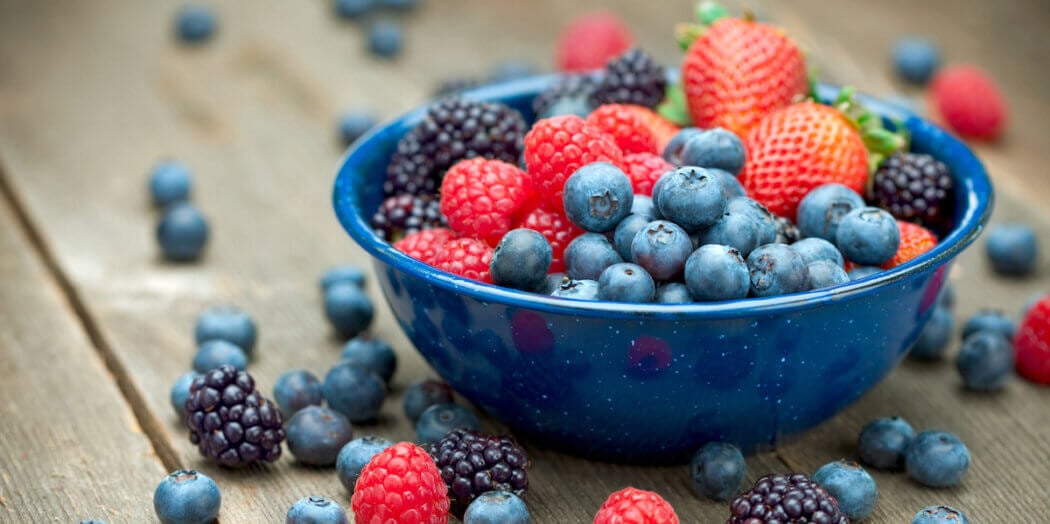
Summer fruits are fresh, sweet, aromatic fruits that grow in the summer months. They can include stone fruits such as peaches; tropical fruits such as mango, pineapple, melons, and papaya; as well as berries like blueberries and strawberries.
There are a number of recipes using summer fruits, including fruit salads, smoothies, juices, and desserts. Keep reading to discover some of the best summer fruits for you to eat and where you can find summer fruits.
List of the 20 best summer fruits to eat
Try any of these delicious summer fruits as a snack or as a fresh juice.
Grab it now on Instacart:
1. Watermelon
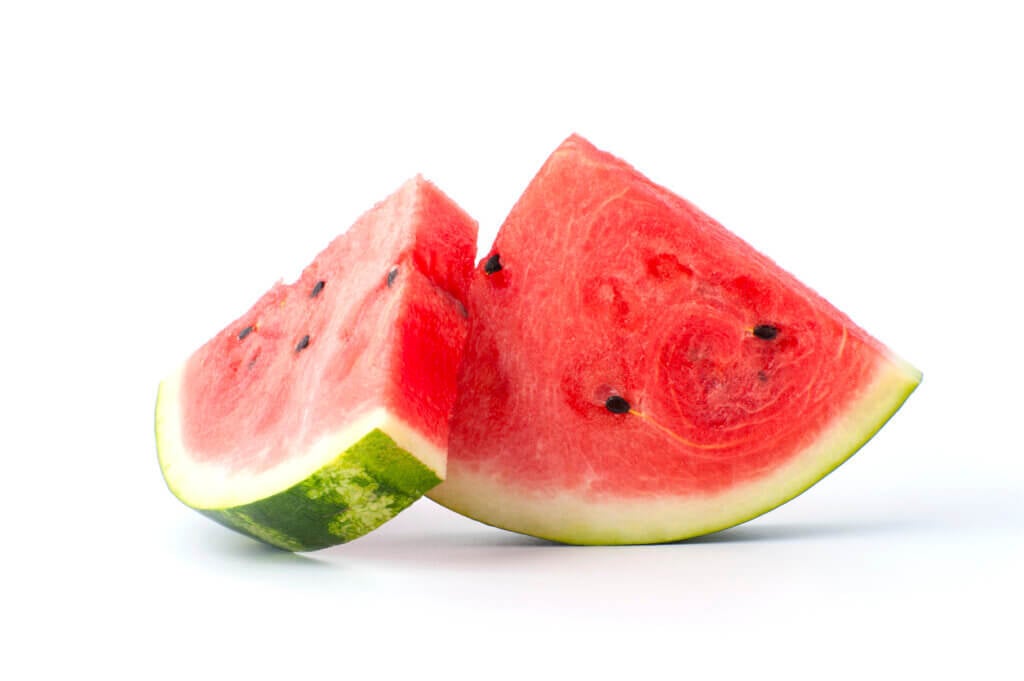
Juicy, sweet, refreshing, and cheap, watermelons are great to feast on during the warmer months. The water content of watermelon is about 92%, which helps with hydration on hot days, and they’re also rich in vitamin A, vitamin C, and potassium.
2. Mango
The mango is often referred to as “King of the Fruits” due to it being both rich in taste and nutritionally dense. Although high in calories, mangoes are also high in fiber and enriched with vitamin A, C, potassium, and zeaxanthin. They have a tropical fragrance, they’re great to use in smoothies, and they’re perfect when paired with coconut cream.
3. Papaya
Papaya is another popular summer fruit that can be eaten fresh or dried and is high in antioxidants and vitamins. Also known as pawpaw fruit, the most common papaya varieties come from Mexico or Hawaii. The papaya flesh is golden and sweet, similar to melon, and used in salads, appetizers, and salsas.
4. Guava
Guava is a highly nutritious summer fruit cultivated in tropical regions such as Central and South America. Its skin is typically yellow to light-green, with a deep pink flesh, and it has a sweet, musky aroma. Its high pectin content makes guava perfect for making jams and jellies, and it’s loaded with vitamin C, fiber, potassium, and antioxidants.
5. Strawberries
Strawberries are grown and eaten all over the world. Strawberries are highly fragrant with a sweet, tart taste, and their flesh is firm but juicy. They are high in vitamin C, antioxidants, quercetin, and potassium and are widely used in baked items, granola, smoothies, jams, and desserts.
6. Grapes
Grapes are readily available in summer, and seedless grapes are ideal for eating fresh, using in fruit salads, or adding to cheese platters and grazing boards. Grapes come in white, crimson, or black varieties, and the darker they are, the sweeter they taste. Grapes contain vitamin C, plant compounds, and antioxidants like lutein, resveratrol, and zeaxanthin.
7. Pineapple
Pineapples are grown in the Asian tropics and are known for their unique shape, tropical, fresh fragrance, and super-sweet taste. Widely available, cheap, and easy to incorporate into your diet, pineapples are also low in calories and rich in the enzyme bromelain, vitamin C, and manganese.
8. Lychee
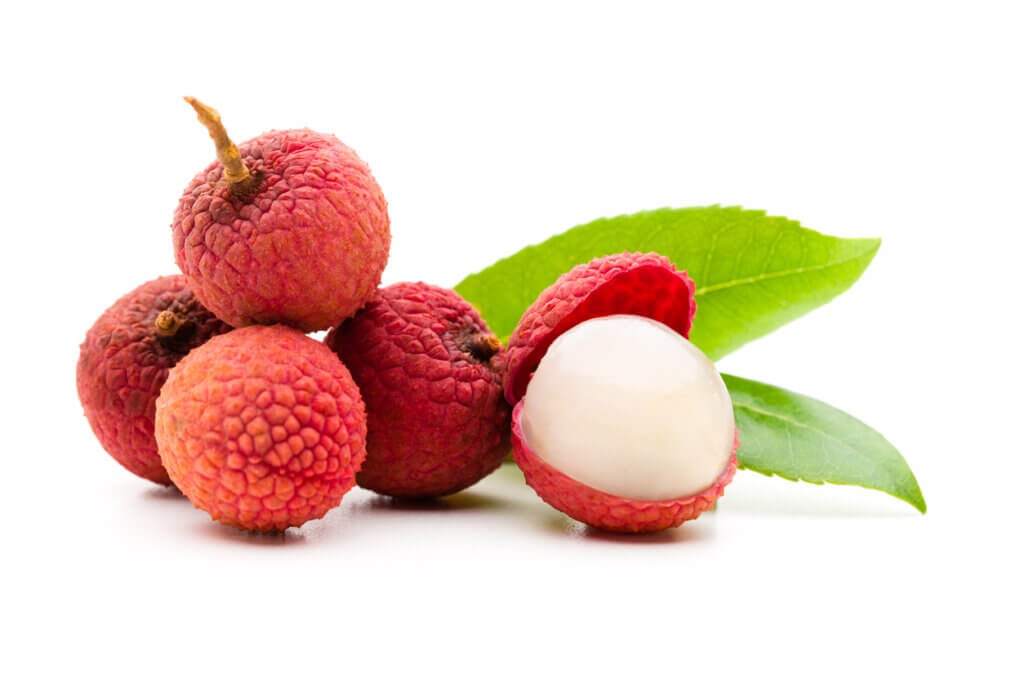
Lychee is a tropical summer fruit native to Asia and some subtropical U.S. states. It has a red bumpy-skinned husk with sweet, floral white flesh inside. Lychees are often added to tropical fruit salads or used in smoothies, juices, and cocktails. This summer fruit is high in polyphenols, vitamins C and B, and potassium.
9. Kiwifruit
The kiwifruit is also known as the Chinese gooseberry and can be grown all year long. Kiwi is high in nutrients like vitamins A, C, and B6, magnesium, and iron. The kiwifruit’s flesh is green with a sweet, tangy taste, and its fuzzy brown skin and black seeds are all edible, making it ideal to include in desserts or in fruit salads.
10. Cantaloupe
Cantaloupe is a variety of melon also known as rockmelon or muskmelon. With a sweet musky aroma, cantaloupe is widely used in salads, smoothies, and sorbets. Cantaloupe contains no fat, is low in calories, and is fiber-rich.
11. Apricot
Apricots are a small orange-colored stone fruit—similar to but smaller than a peach. Their skins are rich in pectin which makes them perfect for making into jams or marmalades. Apricots are widely used in muesli and granola bars, are ideal for making pies and cobblers, and pair well with pork.
12. Blueberries
Blueberries are small, round blue-colored plump berries full of antioxidants, vitamin C, and plant compounds like anthocyanins. They are widely used in desserts, smoothies, baked goods, and granola. Blueberries are a popular muffin filling and are delicious when served with pancake stacks.
13. Blackberries
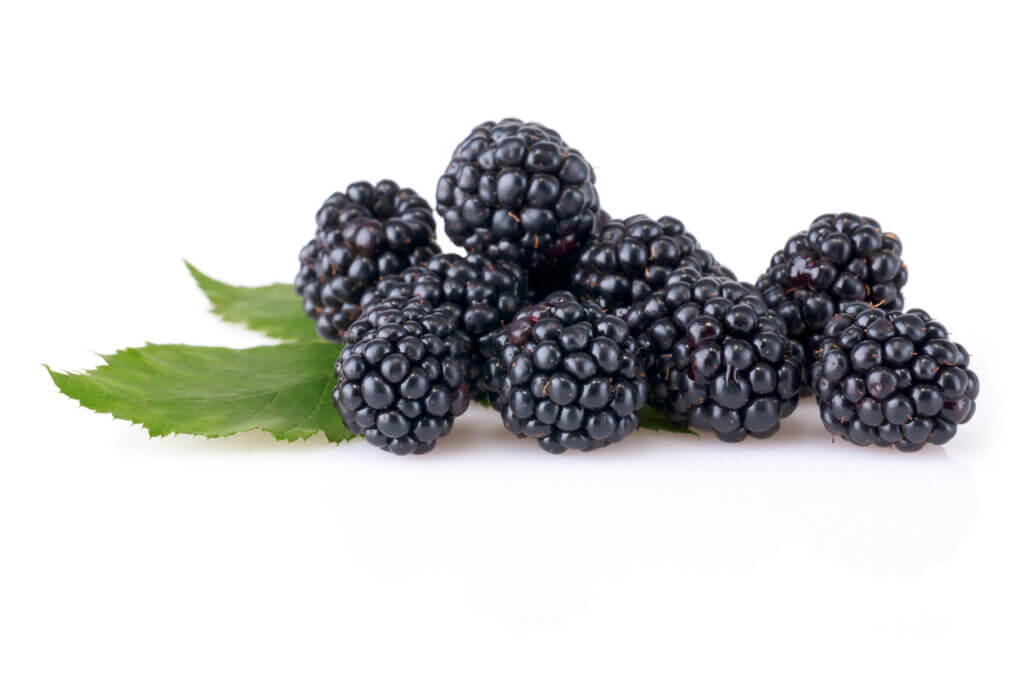
Blackberries are often found growing in woodland areas or hedgerows in the UK. Sweet and tart, these dark purple berries are aggregate fruit made up of smaller fruits called drupes. They’re very high in vitamin C, K, and fiber and low in calories and fat. Blackberries are sweet and tart and are perfect for baked goods, making jam, or throwing into smoothies.
14. Cherries
Cherries are small, deep red-colored, fleshy stone fruits that come in 2 varieties—sweet or tart. Cherries are rich in vitamin C and antioxidants and have anti-inflammatory properties. Tart cherries are famed for being baked into pies. The sweet variety is easy to find, a great addition to desserts, and also highly snackable.
15. Figs
Figs are teardrop-shaped and full of hundreds of edible fig flowers. The whole fig fruit is edible and has a squishy texture with a honey-like taste. Due to their rich sweetness, figs pair well with rich, aged cheeses like stilton, or cured meats such as pancetta.
16. Passion fruit
Passion fruit is the fruit of the passionflower vine and is native to countries such as Brazil and Paraguay. It has a tough, wrinkly outer rind that is usually yellow or purple, and the center is full of juicy seed-filled pulp. Passion fruit can be eaten fresh, or the complex tangy flavor of its pulp can be used to top sweet items like ice cream or yogurt.
17. Raspberries
The raspberry is a bramble fruit native to Northern Europe, the U.S., and Canada. Raspberries are made up of tiny fruits called drupelets. Their rich color and their flavorful, sweet taste make them ideal to eat fresh with desserts including ice cream, yogurt, or with fresh cream.
18. Peaches
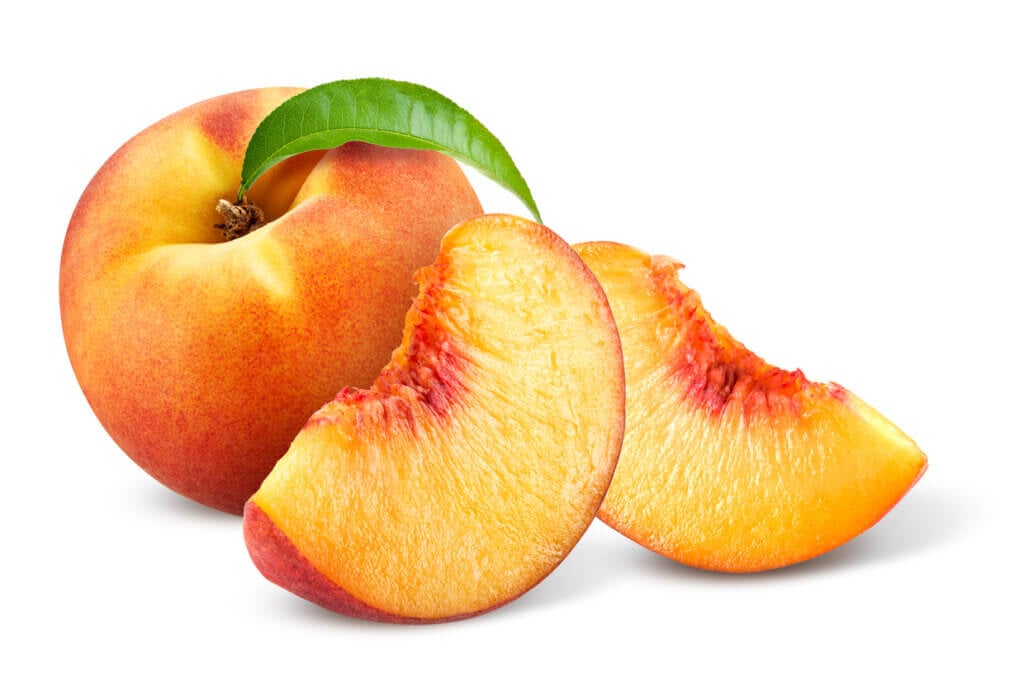
Peaches are orange, squidgy, stone fruits with fuzz-covered peel and a tropical aroma and taste. The flesh is soft and orange or white-colored. Super juicy and succulent eaten on their own or added into pies, peaches are also popular served with ice cream.
19. Nectarines
Nectarines are medium-sized red or orange-colored stone fruits similar to peaches. But, they don’t have the characteristic fuzz on their skin. They come in white and yellow varieties and are smaller, firmer, juicier, and sweeter than peaches. Due to being firmer, they hold their shape better when slicing to add to desserts or tarts.
20. Plums
Plums are the fruit of the plum tree and are small, red, or purple-colored stone fruit. Their sweet-tart flavor makes them ideal for making jam and stewing and using as fillings in sweet pastries. Plums are very high in fiber, high in polyphenol antioxidants, and low in calories and fat.
Where to find summer fruits
Summer fruits are refreshing, deliciously fragrant, easy to snack on, and are always easily adaptable to add to recipes. Stay cool and hydrated in hot summers by stocking up on fresh fruit such as strawberries, mangos, and grapes. Order your heavy watermelons and pineapples through Instacart and get them delivered to your door with same-day delivery.
Most Recent in Grocery Guides

Grocery Guides
Guide to Sustainable Grocery Delivery
Who has time for the grocery store these days? Between work, family and everything else, it feels like a chore we could all do without. That's where sustainable grocery delivery comes in! You get the…
Feb 7, 2025
Grocery Guides
19 Best Milk Substitutes for Baking and Cooking
Milk’s rich texture and neutral flavor make it a staple in countless recipes, bringing creaminess and balance to sweet and savory dishes alike. But what happens if you run out of milk or need a…
Jan 30, 2025
Grocery Guides
15 Best Cheeses for Your Next Charcuterie Board
Let’s face it: The heyday of the store-bought party platter is long gone. Now, the duties of a good host often include curating an impressive charcuterie board. But where do you begin? Charcuterie boards typically…
Jan 21, 2025



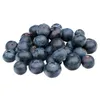
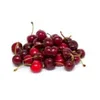
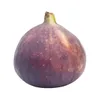



 Squash – All You Need to Know | Instacart Guide to Fresh Produce
Squash – All You Need to Know | Instacart Guide to Fresh Produce  Ghost Pepper – All You Need to Know | Instacart Guide to Fresh Produce
Ghost Pepper – All You Need to Know | Instacart Guide to Fresh Produce  Sprouts – All You Need to Know | Instacart Guide to Fresh Produce
Sprouts – All You Need to Know | Instacart Guide to Fresh Produce 

